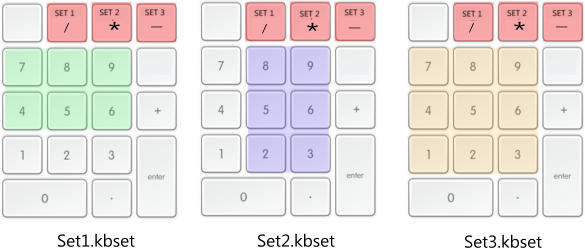

#Programmable macro keypad pro#
These wires all run to a female DuPont connector, which connects to a right-angle header on the Arduino Pro Micro acting as the brains of the operation. I could have used a smaller gauge to make packaging easier, but I didn’t have any on hand.) With eight switches, this makes 9 total wires. Each switch got a separate signal wire, with the commons all being connected to a ground line. This also keeps the complexity down as I don’t have to worry about purchasing and installing diodes for each switch. Although keyboards usually use a matrix to keep the number of wires down, I decided that with the limited number of switches I could get away with dedicating wires to each button. With the switches in place I got to soldering. These are a press-fit into the faceplate, and are retained with tabs. I’m using Cherry MX Black switches, which are standard fare for mechanical keyboards and have plenty of keycap options. Switchboard AssemblyĪfter printing both parts of the case out of black ABS, it was time to assemble. Although I ended up 3D printing this for convenience, it could just as easily be laser-cut for a nicer finish. The faceplate is a flat piece of 0.050″ plastic. It also accommodates the microcontroller with enough room for the backs of the switches and the requisite wiring. The base is a rounded rectangle that curves up to angle the buttons at 20° for easier viewing. The final design is in two parts with a base and a faceplate. It also keeps the footprint small on my desk. Eight switches seems like just enough to accomplish what I need it to without getting exorbitant. I chose a two-row design, each with four buttons for a total of eight hotkeys. This meant that I had a lot of freedom for designing the case so long as I avoided overhangs. The obvious tool of choice for building this was a 3D printer: fast, cheap, and with minimal design constraints. This is perfect, since most of what I need this device to control is OBS, which already has a great built-in hotkey manager. Fortunately though, I can replace the fancy USB communication with hotkeys from an off-the-shelf keyboard library and an Arduino.
#Programmable macro keypad software#
Much of the power of the Stream Deck is in the bundled software, and I’m not going to spend the time to develop a complete software package to replicate everything.


When I say “basic” functionality, I do mean basic. The fancy ARM processor is going to be replaced with a dirt-cheap AVR, the touch-matrix keys are going to be replaced by basic mechanical switches, and the customizable RGB icons are going to be swapped out for relegendable keycaps. I wanted to make something that people could reasonably build at home, at a much lower cost than an off-the-shelf Stream Deck. There was a lot of engineering that went into making the Stream Deck, and I’m going to have to simplify. The #1 rule for this is cheap. The buttons on top allow the LCD to shine through for the backlight icons, and push down on a touch matrix to trigger button presses. Adafruit did an interesting breakdown on stream, but it’s essentially a mini computer using an Atmel ARM926EJ-S driving a 480×272 resolution LCD. The Stream Deck itself is a fantastic piece of tech. It could be used as a hotkey board for any program. Fortunately I think I can make something that replicates the basic functionality for a fraction of that price: what I’m calling a “Stream Cheap”.Īlthough I’m focusing on using this as a replacement for a Stream Deck, at heart this is really a custom macro keyboard. Unfortunately the Stream Deck is out of my price range, at a whopping $149.99 retail. By configuring the bundled software, users can set button icons and macros to control your casting software, send messages in the stream chat, launch programs, and much much more. The Stream Deck is a small device with 15 buttons, each of which has its own customizable RGB icon. I’ve been doing a little streaming on Twitch, and a lot of streamers I follow have something called an Elgato Stream Deck.


 0 kommentar(er)
0 kommentar(er)
